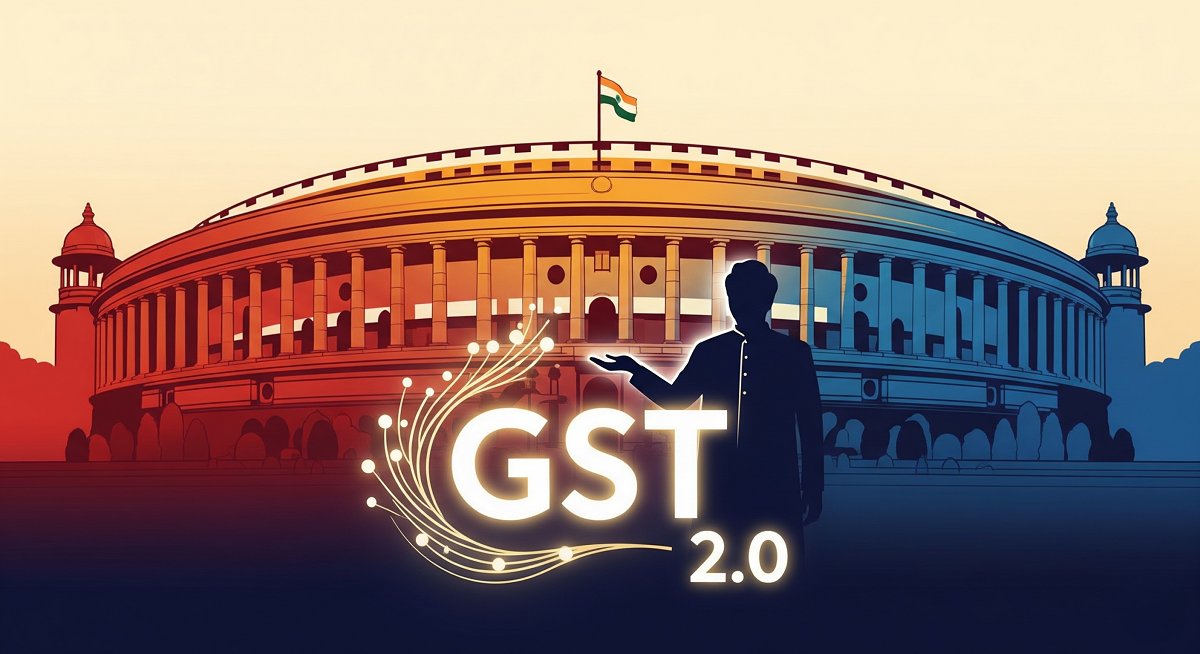India’s Goods and Services Tax (GST) system has undergone a significant transformation with the introduction of GST 2.0. Announced by the GST Council on September 3, 2025, this reform aims to simplify the tax structure, reduce compliance burdens, and provide substantial relief to small businesses across the country.
What Is GST 2.0?
GST 2.0 represents a comprehensive overhaul of the existing GST framework. Key changes include:
- Simplified Tax Slabs: The previous four-tier GST structure has been reduced to two primary slabs—5% and 18%. Additionally, a 40% tax rate has been introduced for luxury and sin goods.
- Elimination of Cess: The compensation cess has been removed, except for select items like tobacco products, streamlining the tax calculation process.
- Expanded Exemptions: Essential goods such as milk, flour, and health insurance are now exempt from GST, providing immediate relief to consumers and businesses alike.
GST Benefits for Small Business
1. Reduced Tax Burden
The introduction of lower tax rates on various goods and services directly benefits small businesses. For instance, the dairy sector is projected to gain approximately ₹11,400 crore due to reduced GST rates on dairy products. Similarly, the textile sector welcomes the simplification to a uniform 5% GST, aiding both producers and retailers.
2. Simplified Compliance
GST 2.0 introduces a two-tier tax structure, reducing the complexity associated with multiple tax slabs. This simplification leads to fewer classification disputes and smoother invoicing processes, making it easier for small businesses to comply with tax regulations.
3. Faster Refunds
The new system facilitates quicker processing of refunds, particularly for businesses dealing with inverted duty structures. This improvement in cash flow is crucial for small businesses, allowing them to reinvest in operations and growth.
4. Enhanced Digital Tools
The reform emphasizes digitalization, offering small businesses access to advanced tools for tax filing and compliance. These tools simplify the process and reduce the administrative burden on small business owners.
Expert Insights
Industry leaders have lauded GST 2.0 for its potential to stimulate economic growth. Sanjiv Bajaj, Chairman and Managing Director of Bajaj Finserv, described the recent GST rate cuts as the most significant reform since the GST’s initial rollout in 2017. He emphasized that the changes would significantly spur consumer demand, boost lending activity, and enhance the performance of financial services. Bajaj noted that the reforms will notably benefit urban and rural consumption, while also providing critical support to small businesses, MSMEs, and the housing sector.
What This Means for Small Businesses
The implementation of GST 2.0 is expected to have a profound impact on small businesses:
- Increased Profit Margins: Lower tax rates on inputs and finished goods reduce the overall cost of doing business, leading to improved profit margins.
- Improved Competitiveness: Simplified tax structures and faster refunds enhance the competitiveness of small businesses in both domestic and international markets.
- Encouragement of Formalization: The ease of compliance and reduced tax burdens encourage informal businesses to formalize, expanding the tax base and fostering a more organized economy.
FAQs
A1: GST 2.0 introduces two primary tax slabs—5% and 18%—with a 40% rate for luxury and sin goods.
A2: GST 2.0 benefits small businesses by reducing tax rates, simplifying compliance, ensuring faster refunds, and providing enhanced digital tools for tax management.
A3: The new GST rates under GST 2.0 are set to come into effect on September 22, 2025.
Sources:
Kotak Mutual Fund
Times of India
Economic times









